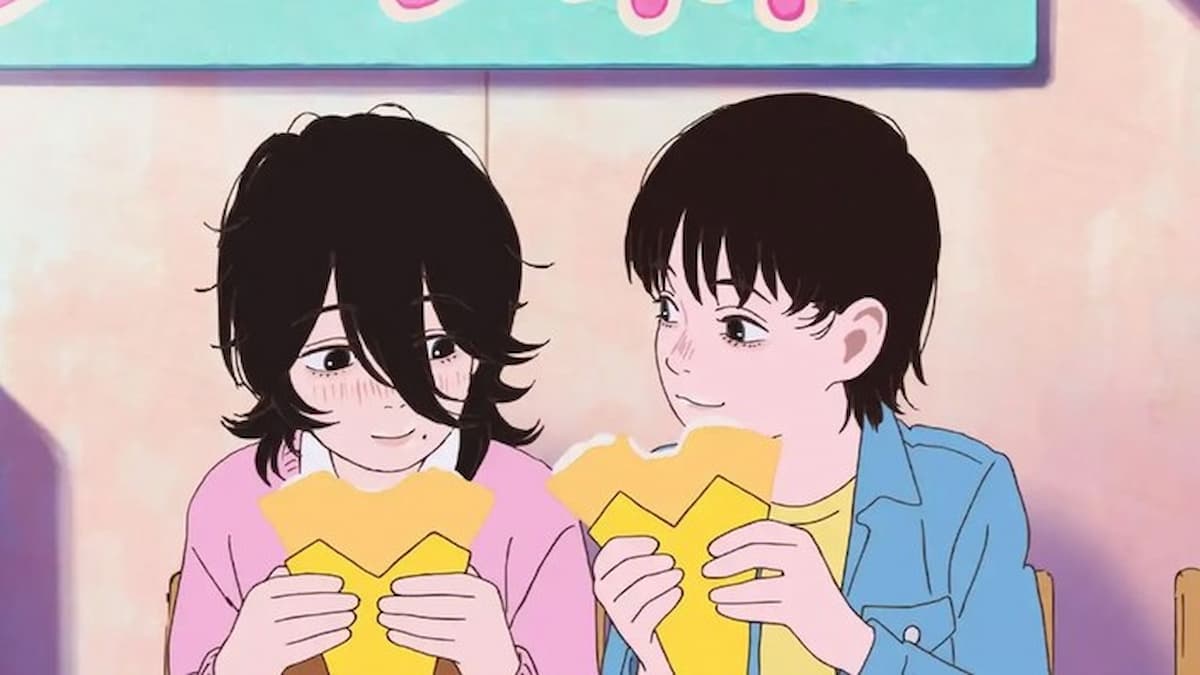‘Look Back’ proves the secret ingredient to an unforgettable character has everything to do with what’s in their heart and nothing to do with gender

There were three things I knew about Look Back before I entered the theater. One, it’s based on a one-shot manga by Tatsuki Fujimoto, the mangaka behind my beloved Chainsaw Man. Two, several outlets called the one-shot “semi-autobiographical.” And, relatedly, three, it’s about kids creating manga.
All three of those statements are correct. But Look Back has a lot of surprises in store, even in its short hour-long runtime. The most obvious surprise will come towards the end of the film. But for me, there was another, more subtle surprise. One which really, deeply impressed me.
As mentioned, Look Back is semi-autobiographical—deep emphasis on the “semi.” While the film overall is fictional, the main character, Fujino, is clearly a stand-in for Fujimoto. It’s right there in the name, the first syllable of which bear as much resemblance to each other in English as they do in Japanese. The film’s director, Kiyotaka Oshima, even went so far as to give Fujino some of Fujimoto’s real-life ticks.
There’s at least one very obvious, very intriguing difference between Fujimoto and Fujino, though. Tatsuki Fujimoto is male. But Fujino, the creator he created to be his avatar in this work, is female.
Empathy isn’t so hard
It’s a bias which you might not notice when it caters towards you, but a lot of mainstream media has male protagonists. Obvious statement of the year, perhaps. But if you’re female or gender-queer, you get used to putting yourself in the shoes of a character who’s a different gender than you are.
It was something I never really thought about until I had a conversation in college with a male friend about dreams. I said I had dreams where I am sometimes embodying male characters (usually from TV shows), and he looked at me like this was unthinkable. Then films like the lady version of Ghostbusters or series like The Legend of Kora made it very clear that a chunk of the American population was not willing to do the same “shoe swapping” empathetic exercise.
Of course, plenty of guys watch Kora or Veronica Mars or something and love the hell out of it. I’m saying this mostly to set up the premise that the traffic on this two-way street is a bit more clogged in one direction. In Look Back, not only is Tatsuki Fujimoto putting female protagonist front-and-center, but he’s placing himself as that female protagonist. Really: how many male authors can you think of that would willfully, effortlessly change their gender to female when inserting themselves in a work? And not for some cheeky, jokey sexualized reason, either?
It deeply impresses me that Fujimoto decided to go in this direction. Fujino, as a character, works equally well as male or female. It truly does not matter in regards to her personality. Neither Fujino nor Kyomoto is girly, nor are they not not girly enough to wear the occasional skirt. As far as who the character is, what their skills are, and what they accomplish, gender does not matter at all. What an incredible breath of fresh air.
Just write a good character, and it’ll be fine
Look Back is not the first time Tatsuki Fujimoto has played with the idea that gender does not particularly matter when you’re cooking up who a character will be. Power from Chainsaw Man is based on Eric Cartman from South Park. You could argue Power is a devil inhabiting a female corpse, sure, but Power as a character is definitely female.
Besides, in Part 2, we meet Asa Mitaka—who I would argue is one of the best-written female characters in shonen manga, at least at the moment. Asa is a heavily traumatized, awkward teenage girl, and so far, the way she’s written has been spot on. Look Back, incidentally, was written between Chainsaw Man Parts 1 and 2.
In a lot of shonen manga, the female characters feel “girly” in some way—talking in super high voices, wearing pink dresses, etc. If they’re not “girly,” they’re a rebel or a tomboy. There’s not a whole lot in between. But that in between is where most female-identifying people live.
In Look Back, Fujino has a rich personality: she’s confident, flippant, bold. She happens to be female. She also happens to write the in-world equivalent of Chainsaw Man, which gives the empowering message from the author that women can be just as good of mangaka as men. Because of course they can. When you’re crafting a character, or imagining potential, the only boundaries are the ones you create for youself.
This is an opinion piece. The views expressed in this article are those of just the author.
